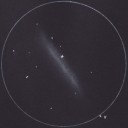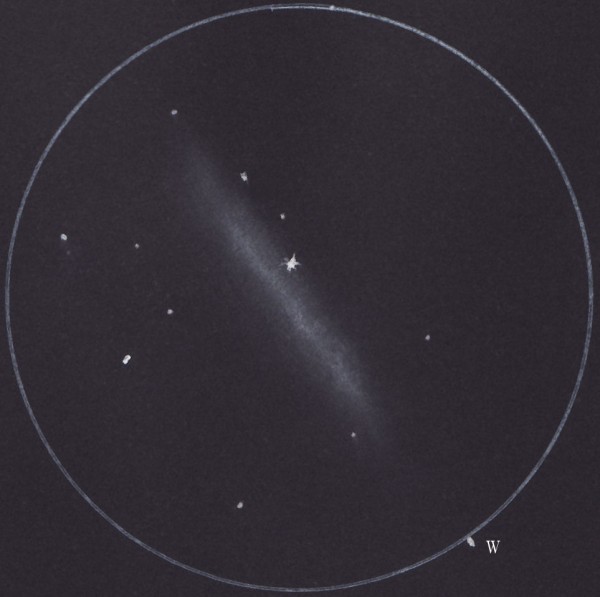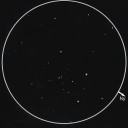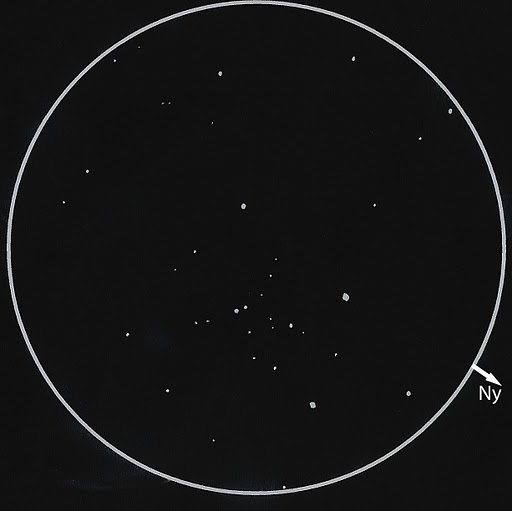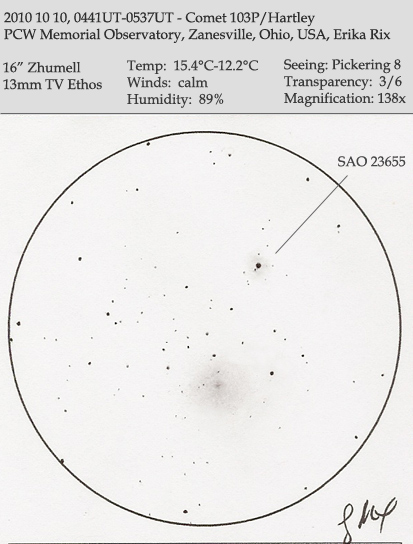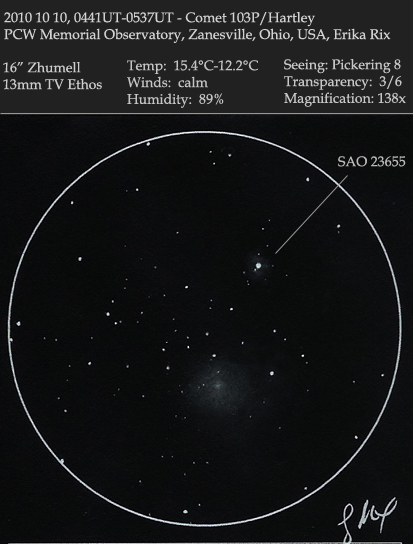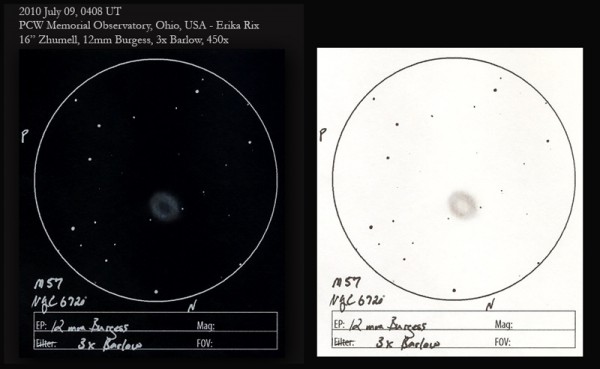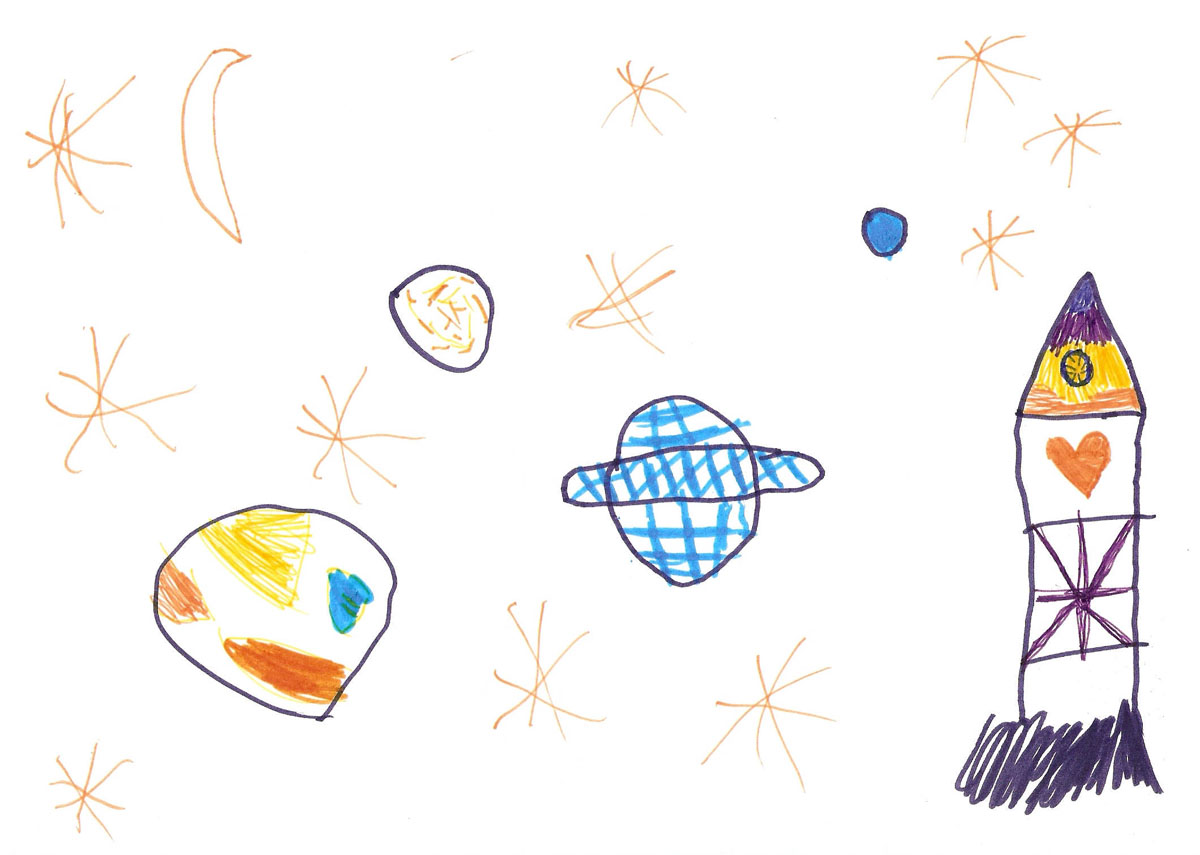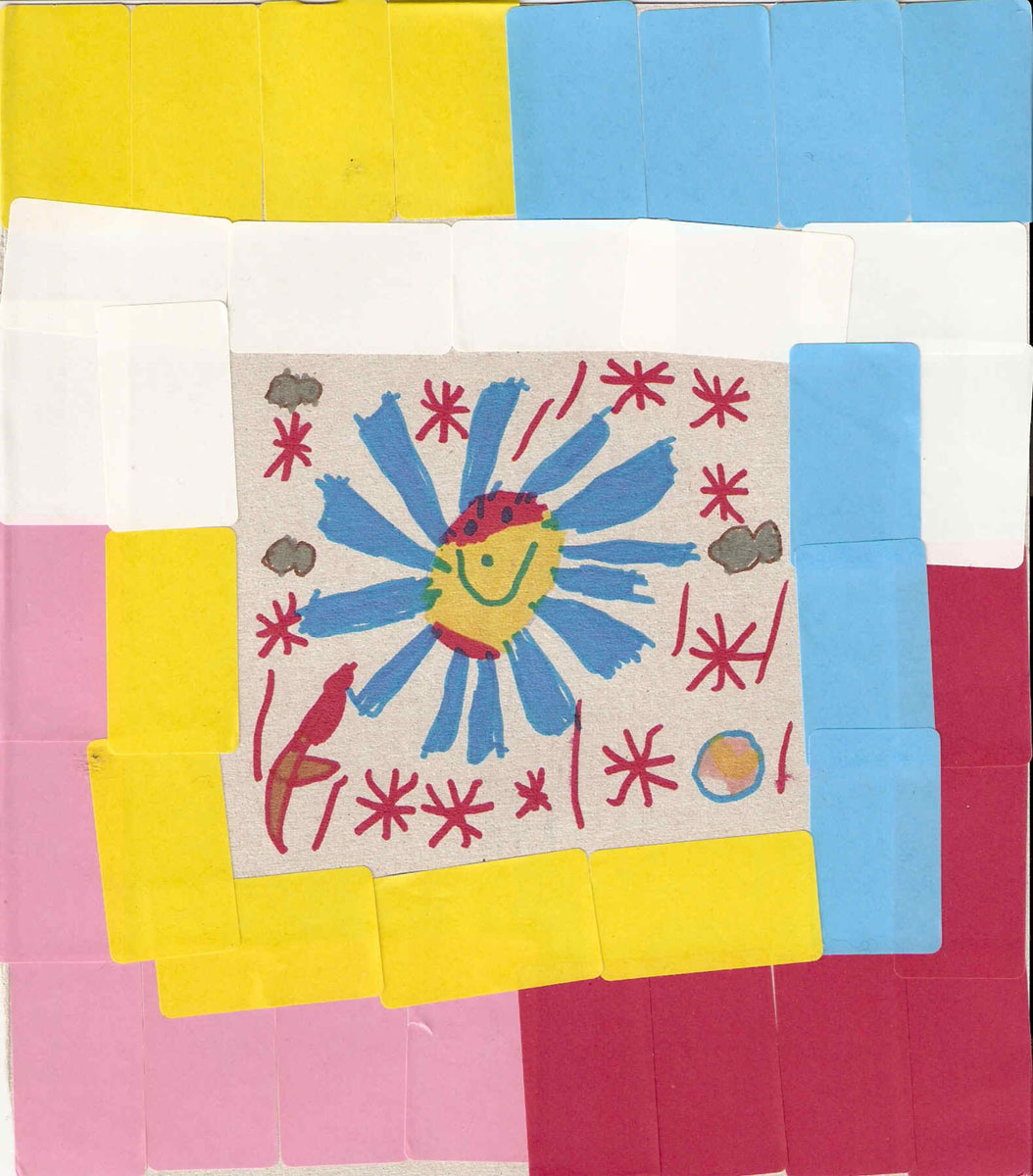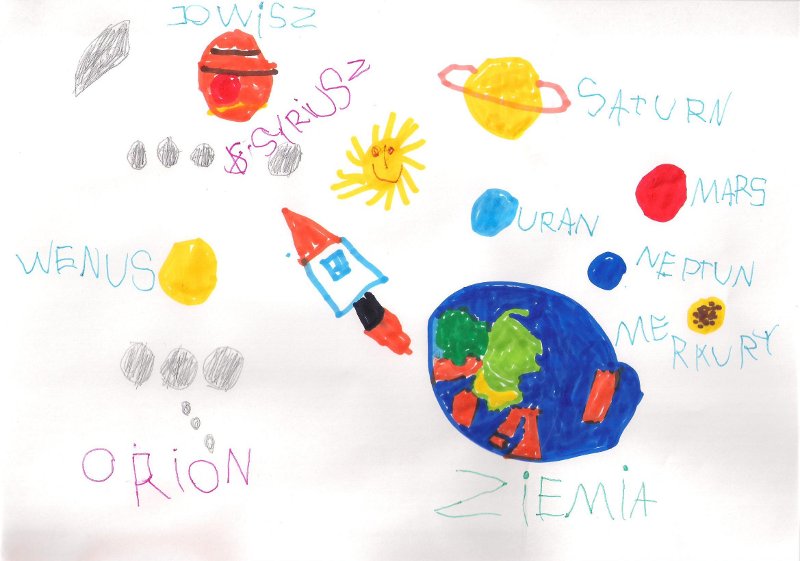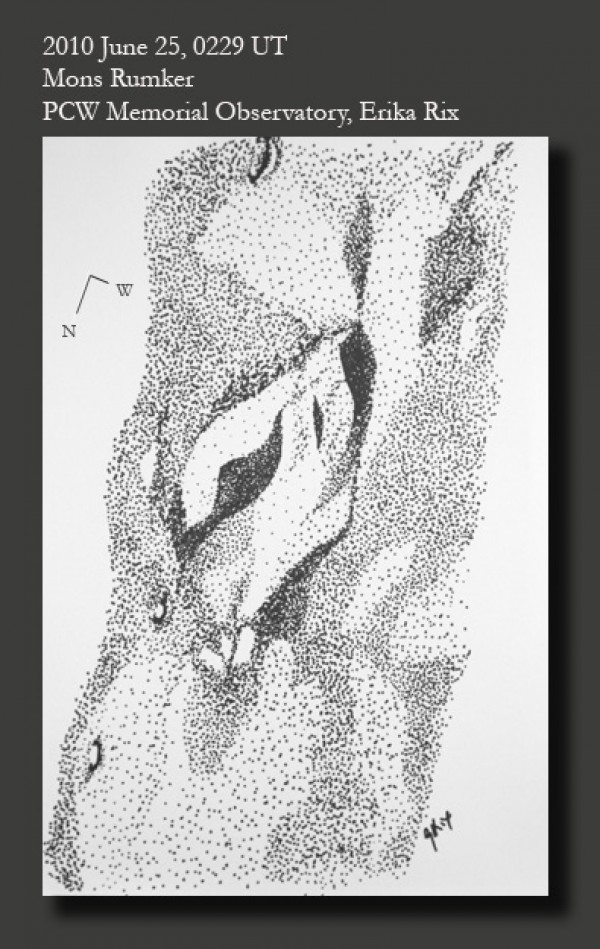
PCW Memorial Observatory, OH, USA
Erika Rix
2010 06 30, 0533-0839 UT
Cauchy, rilles, & domes
Zhumell 16”, 12mm Burgess, 2x Barlow, 300x mag
Temp: 11.2°-9.7°C, > 90% humidity
S: Antoniadi III increasing to II-I
Phase: 118°
Lunation: 17.77 d
Illumination: 87.2%
Lib. Lat: -3°28’
Lib. Long: +00°33’
Az: 135°22’, Alt: 25°44’
2010 06 25, 0229 UT
Mons Rumker
Zhumell 16”, 12mm Burgess, 2x Barlow, 300x mag
Phase: 16.2°
Lunation: 12.64 d
Illumination: 98%
Lib. Lat: 3°37’
Lib. Long: 5°33’
Az: 153°57’, Alt: 19°25’
One of the joys of the types of observing sessions we do is trying new
techniques and media to sketch the objects we view (except for my solar
sketches….I’ve sort of settled for the comfortable ol’ shoe feeling of
my black paper and Conte’). I’ve played around with quills and India ink
for years, actually since I was in my early teens. The thought of having
an open bottle of India ink next to me in the dark while observing was a
not appealing. In fact, as messy as I am with ink, nothing within a 10’
radius would have been safe from being splattered black, including my
optics.
I’ve been studying some of Harold Hill’s beautiful sketches and fancied
trying my hand at stippling for lunar observations instead of my typical
charcoal or pastels. I believe the norm is to do a schematic sketch in
pencil and label it with a legend. The idea of this is to bring the
sketch back inside and stipple over it with the quill and ink in the
comfort of your home with light. If you took care with your notes and
the labeling, you could even do this days later. It takes me long enough
to write my reports and record all the data from my sessions and I don’t
relish the idea of spending extra time working on a sketch once my
session at the eyepiece is over. Above all, I certainly don’t trust my
ability to redraw (or draw over a schematic sketch) using a shading
legend, which is one reason my sketches are completed at the telescope.
I want to ensure that there is no chance of me messing up (adding
details, misplacing markings, wrong shadings…) the details that I
actually see during my session.
Taking all that into consideration, a good alternative to India ink is
using a marker. Grabbing what I could find on hand, I used white card
stock paper and a permanent marker with a finer point for my sketch of
Mons Rumker. Since this was my first attempt, I went ahead and tried the
schematic sketch with labels first of Mons Rumker. I ended up with lines
and numbers all through the sketch so that soon I was unable to make
neither rhyme nor reason of the sketch itself.
Next, I tried drawing the dome with a pencil as if I were making a quick
regular sketch of it. Then I redrew it inside the house using the marker
for stippling. Although it was kind of fun, if I’m going to do a sketch
with a pencil anyway, what’s the point of doing it all over again with
stippling? Plus, I accidentally inverted my craterlets in the re-sketch.
The final straw was when I showed the stippled sketch to Paul, my
husband who is also an amateur astronomer, and after studying it for a
moment, he asked me what it was.
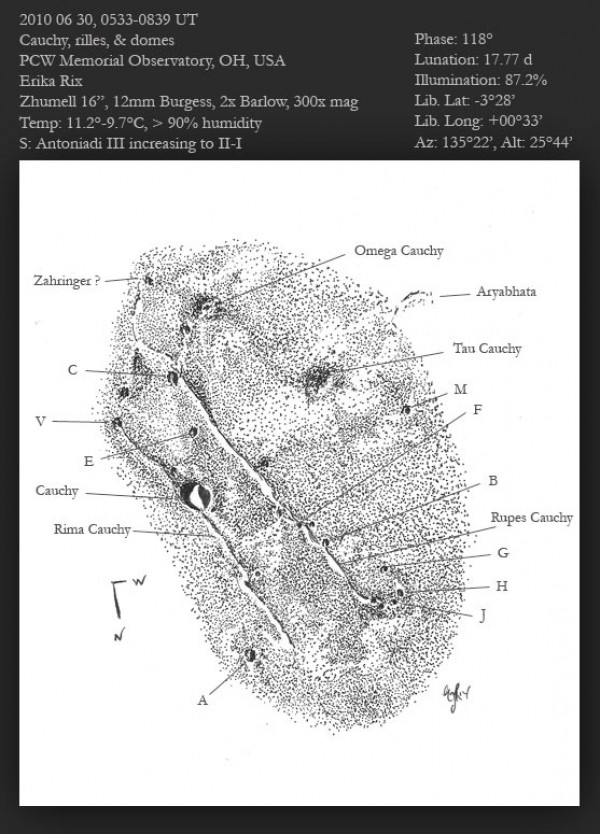
My next attempt turned out much better. I can’t help but to think part
of that is because I sketched while viewing instead of having to try
decipher my notes or markings of a schematic sketch after my observing
session was over. I was sketching all the subtle blendings instead of
having lined borders where the contrasts changed. Of course, the change
in markers plus a little more experience helped too. I sketched the area
around Cauchy with the rilles and domes nearby. I used an ultra-fine
black permanent marker with Rite in the Rain paper and created the
entire sketch at the eyepiece. I didn’t find a need to use erasers nor
pencils for the Cauchy sketch.
Harold Hill is a master and I’ve got a lot of work ahead of me. But the
first step is actually do it. The second is doing it again and again.
Throw in a few tweaks to the media or techniques, and my stippled
sketches are bound to show a result of my efforts.
